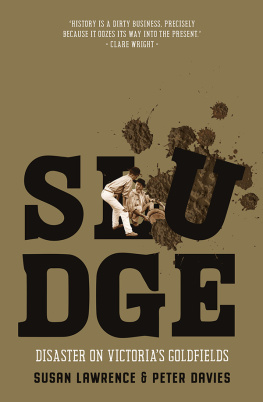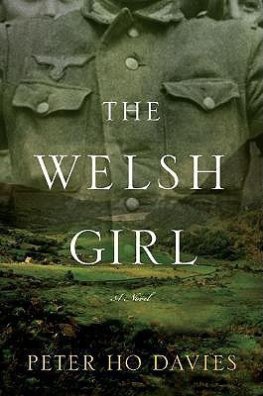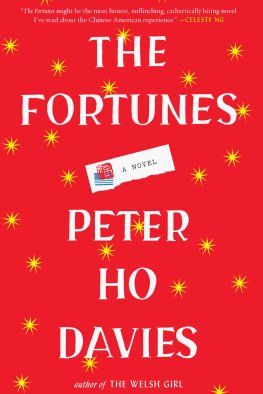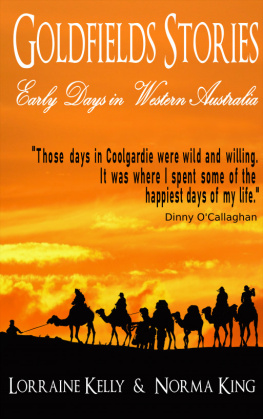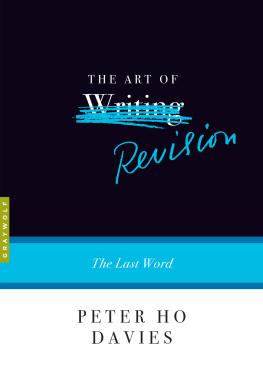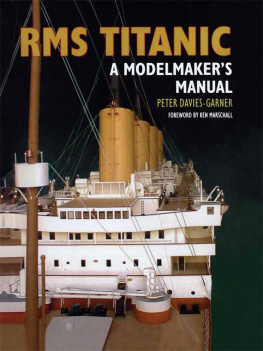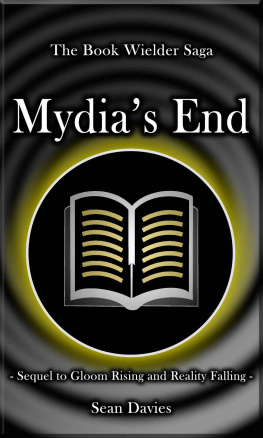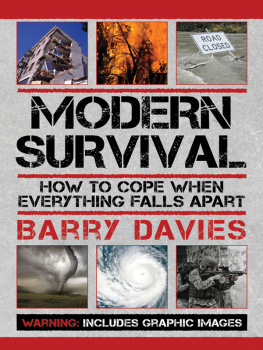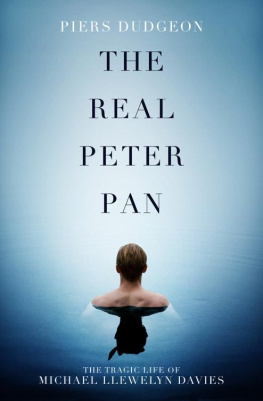Peter Davies - Sludge: Disaster on Victoria’s Goldfields
Here you can read online Peter Davies - Sludge: Disaster on Victoria’s Goldfields full text of the book (entire story) in english for free. Download pdf and epub, get meaning, cover and reviews about this ebook. year: 2019, publisher: La Trobe University Press, genre: Science. Description of the work, (preface) as well as reviews are available. Best literature library LitArk.com created for fans of good reading and offers a wide selection of genres:
Romance novel
Science fiction
Adventure
Detective
Science
History
Home and family
Prose
Art
Politics
Computer
Non-fiction
Religion
Business
Children
Humor
Choose a favorite category and find really read worthwhile books. Enjoy immersion in the world of imagination, feel the emotions of the characters or learn something new for yourself, make an fascinating discovery.
- Book:Sludge: Disaster on Victoria’s Goldfields
- Author:
- Publisher:La Trobe University Press
- Genre:
- Year:2019
- Rating:5 / 5
- Favourites:Add to favourites
- Your mark:
- 100
- 1
- 2
- 3
- 4
- 5
Sludge: Disaster on Victoria’s Goldfields: summary, description and annotation
We offer to read an annotation, description, summary or preface (depends on what the author of the book "Sludge: Disaster on Victoria’s Goldfields" wrote himself). If you haven't found the necessary information about the book — write in the comments, we will try to find it.
Sludge: Disaster on Victoria’s Goldfields — read online for free the complete book (whole text) full work
Below is the text of the book, divided by pages. System saving the place of the last page read, allows you to conveniently read the book "Sludge: Disaster on Victoria’s Goldfields" online for free, without having to search again every time where you left off. Put a bookmark, and you can go to the page where you finished reading at any time.
Font size:
Interval:
Bookmark:
Praise for Sludge
This is the book about the goldfields I most wanted to read but didnt think could be written. Its a remarkable achievement.
TOM GRIFFITHS, author of The Art of Time Travel
If Victorians dreamed of glittering gold, what they got was a tidal wave of sludge that covered the land like a poisonous blanket and made the rivers run thick as gruel. Susan Lawrence and Peter Davies vividly recreate the forgotten landscapes of nineteenth-century Victoria, revealing how people and mining destroyed the country that nurtured them, and how that silent legacy is still with us today. Here is a powerful parable, a work of brilliant rediscovery and a wake-up call for our own times.
GRACE KARSKENS, author of The Colony
Sludge is a fascinating, entangled story of human endeavour and environmental destruction. An exciting and timely reminder that history is a dirty business, precisely because it oozes its way into the present.
CLARE WRIGHT, author of The Forgotten Rebels of Eureka
Sludge, slurry, slickens or porridge: call it what you will, mining waste made a mess of Victorias environment. In Sludge, Susan Lawrence and Peter Davies carefully investigate this murky history of greed, mismanagement, reform and forgetting. It is a gripping account of an environmental catastrophe, and it vividly conveys the long-term costs of short-term gains.
BILLY GRIFFITHS, author of Deep Time Dreaming

Published by La Trobe University Press in conjunction with Black Inc.
Level 1, 221 Drummond Street
Carlton VIC 3053, Australia
www.blackincbooks.com
www.latrobeuniversitypress.com.au
Copyright Susan Lawrence and Peter Davies 2019
Susan Lawrence and Peter Davies assert their right to be known as the authors of this work.
ALL RIGHTS RESERVED.
No part of this publication may be reproduced, stored in a retrieval system, or transmitted in any form by any means electronic, mechanical, photocopying, recording or otherwise without the prior consent of the publishers.
La Trobe University plays an integral role in Australias public intellectual life, and is recognised globally for its research excellence and commitment to ideas and debate. La Trobe University Press publishes books of high intellectual quality, aimed at general readers. Titles range across the humanities and sciences, and are written by distinguished and innovative scholars. La Trobe University Press books are produced in conjunction with Black Inc., an independent Australian publishing house. The members of the LTUP Editorial Board are Vice-Chancellors Fellows Emeritus Professor Robert Manne and Dr Elizabeth Finkel, and Morry Schwartz and Chris Feik of Black Inc.
9781760641108 (paperback)
9781743821091 (ebook)

Cover design by Regine Abos
Text design and typesetting by Akiko Chan
Cover image of gold prospectors in Queensland courtesy of KPGA/Alamy
For our parents
INTRODUCTION
Bento Rodrigues, Brazil, 6 November 2015
W ET, ORANGE MUD COVERS EVERYTHING: STREETS, houses, cars, animals, trees, fields. The violent force of a torrent of mud has overturned cars and left them hovering on top of buildings. It has torn the roofs off houses and pushed over their walls. The view of the town from helicopters flying above reveals a desolate landscape: sludge-caked animals struggle to free themselves, and rescue teams search desperately for survivors. Mud dyes the river orange for hundreds of kilometres downstream, and two weeks later it will flow out into the Atlantic in an expanding orange stain.
This devastation is the result of the catastrophic failure of a tailings dam: a vast settling pond built to store the muddy waste from Samarcos Germano iron ore mine. Late one afternoon in November 2015 the dam wall gave way. The collapse released a flood of polluted, sediment-laden water that raced down the valley below, destroying and burying everything in its path and leaving twenty-one people dead. The valley will never be the same.
Just three years later another tailings dam failed in the same part of Brazil, with more tragic human consequences. On 29 January 2019,
Ironically, the mine owners which include Australias BHP built these tailings dams to protect the environment. Without them, waste would have poured into the river every day the mine operated. The sludge would have flowed everywhere, oozing through streets and under doors, creeping up walls and between trees, covering gardens and crops. It would still have turned the ocean orange it just would have taken longer and occurred more gradually, over years rather than hours, and no one would have drowned.
Chewton, Victoria, Australia, 9 December 2010
Forest Creek flows placidly down a valley lush with grass and dotted with trees. Plastic guards protect seedlings planted recently as part of a program to reintroduce native species. A cycling path meanders across the low hills in the middle distance, and sheep graze in a far paddock. In the foreground two little boys play cheerfully in the clear waters below the bridge, building dams in the gravelly stream. Its an idyllic scene in an idyllic place. Its almost impossible to believe that only 100 years ago this beautiful place was as devastated as Bento Rodrigues and Brumadinho.
For nearly a century the valley of Forest Creek was a barren, sandy wasteland. Miners dug it over again and again after the discovery of gold in the creek bed in 1851. Both valley and creek were filled with mud and mining waste, and then torn up again by dredging early in the twentieth century. Almost every tree for miles in all directions was cut down to slab the mine shafts or feed the boilers.
Forest Creek may look like a lovely place today, but it is no gentle natural landscape. It is a complex place where the results of past human interventions and dynamic natural processes have become closely entangled. The river has gradually reshaped its bed according to the hydrological processes that govern flowing water everywhere, but the materials it works with, the sands and gravels and silts of the channel and surrounding floodplain, were deposited there by people a century and more ago. The loveliness of the valley today can be attributed to the resilience of environmental systems that endure despite repeated human onslaughts. But in the deceptively smooth contours of the land, in the mix of introduced and native plants, and even in the location of the river itself and the shape of its channel, the practised viewer can see the subtle marks of what has happened in the past.
The Forest Creek valley is one of many such entangled places. In the nineteenth century Victoria was the centre of a global resources boom, with the surging economy and environmental consequences to match. Gold from the mines built Marvellous Melbourne, while mud oozed from the goldfields to choke numerous rivers across Victoria. In those days tailings dams were unheard of. When BHP was formed as Broken Hill Proprietary in 1885 it was common practice to just let the waste flow where it flowed, and no one thought differently. Tailings covered vast areas of land in mining regions all over the world, including Australia.
Today, environmental protection laws in developed countries require mines to store their waste water on site. Modern tailings dams like the one that failed in Brazil are intended to keep mining waste out of rivers. Mining companies build ponds next to their processing plants and fill them with all the water that has been used to process the ores. These dams contain millions of cubic metres of highly toxic liquid and slurry. This form of storage is considered modern industrial and environmental best practice, and dams hold thousands of megalitres of polluted water, keeping them out of waterways. Most of the time the dams work well, but sometimes, as at the Germano iron ore mine, they give way and the accumulated toxic waste of many years is released in one catastrophic event.
Next pageFont size:
Interval:
Bookmark:
Similar books «Sludge: Disaster on Victoria’s Goldfields»
Look at similar books to Sludge: Disaster on Victoria’s Goldfields. We have selected literature similar in name and meaning in the hope of providing readers with more options to find new, interesting, not yet read works.
Discussion, reviews of the book Sludge: Disaster on Victoria’s Goldfields and just readers' own opinions. Leave your comments, write what you think about the work, its meaning or the main characters. Specify what exactly you liked and what you didn't like, and why you think so.

